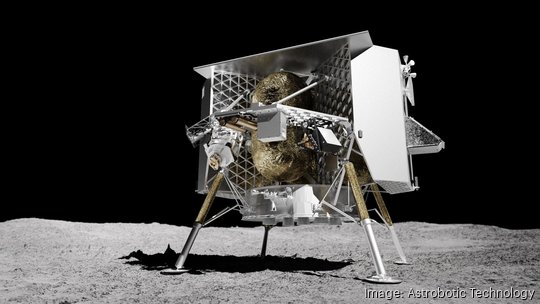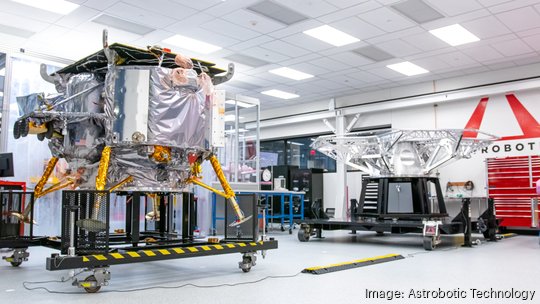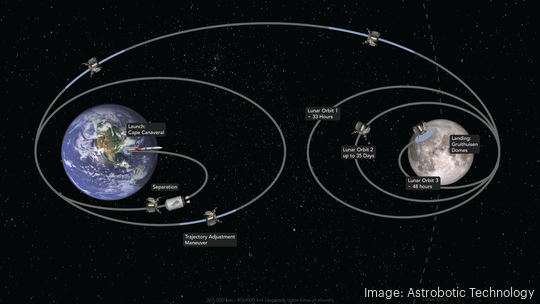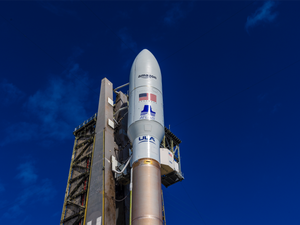
Christmas Eve is expected to mark a major milestone: The U.S. will launch its first unmanned soft lunar landing mission since 1968, the final year of the Surveyor program. The last American manned mission to make a soft landing on the moon was NASA's Apollo 17.
The lunar lander is called Peregrine, and it will be the primary cargo on the United Launch Alliance Vulcan Centaur V, which is scheduled to head to space at 1:49 the morning of Dec. 24.
Peregrine looks a lot like the Apollo Lunar Module, though it’s smaller. It’s an Astrobotic Technology product, one of two lunar landers the Pittsburgh company makes.

Astrobotic CEO John Thornton said payloads from seven countries will be aboard, and the manifest includes the following and more:
- Miniature robots from Mexico – the country’s first lunar mission.
- A radiation detector from Germany, which will gauge the presence of radiation in advance of the next crewed lunar mission.
- A bitcoin from Seychelles.
- A NASA navigation Doppler lidar to help ensure a precise moon landing.
- A capsule containing messages from children from around the world, sent from Japan.
Astrobotic provides a user guide that spells out everything its payload customers need to know, including the following details about launch and landing.
Upon launch, the Vulcan will carry Peregrine to Earth’s orbit, where the lander will detach from the rocket between one and three hours after takeoff. At that point, Astrobotic’s Mission Control Center will take control of Peregrine.

The lander will cruise — this can last from three to 33 days — and then, propelled by trans-lunar injection, get set on a trajectory that will take it to lunar orbit. Lunar orbit can last from four to 25 days before Peregrine attempts an autonomous landing north of the Gruithuisen crater.
Related:
How launching cremated remains has grown into a booming business at Cape Canaveral
Canaveral rocket set to launch lunar lander — and 'Star Trek' legends' remains — to the moon
The Peregrine lunar lander will deliver up to 585 pounds of science and technology payload on each mission. Since Peregrine lacks the ability for a return trip to Earth, it will permanently occupy the lunar surface after touching down. In the future, the Peregrine model will be deployed for the transportation of heavier payloads.
Astrobotic won a 10-year Commercial Lunar Payload Services contract in 2018 to make moon deliveries for NASA. A news release said Commercial Lunar Payload Services would leverage the private sector to deliver cargo as part of NASA’s plan to return to the moon.
Astrobotic is one of 14 companies providing similar payload services for moon missions. The combined contracts have a maximum value of $2.6 billion. The only Florida-based business among them is Moon Express. The company develops robotic spacecraft for low-cost missions beyond Earth and has corporate headquarters and engineering and test facilities at Cape Canaveral Air Force Station, next to the Kennedy Space Center.
For more stories like this one, sign up here for Orlando Inno newsletters from the Orlando Business Journal and the American Inno network. And be sure to follow us on LinkedIn, Facebook and X (formerly known as Twitter).







